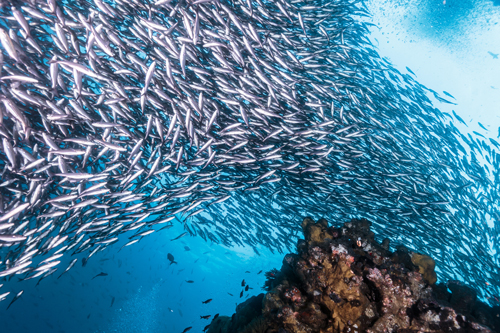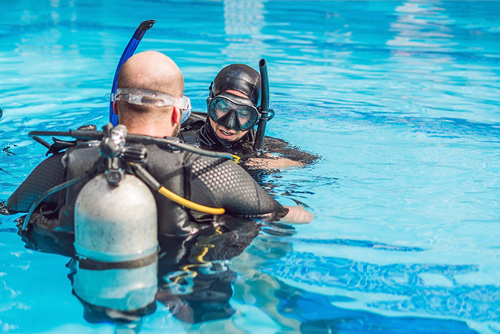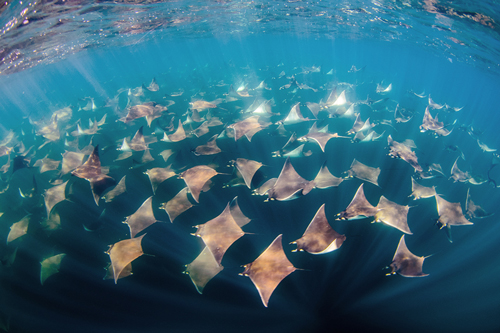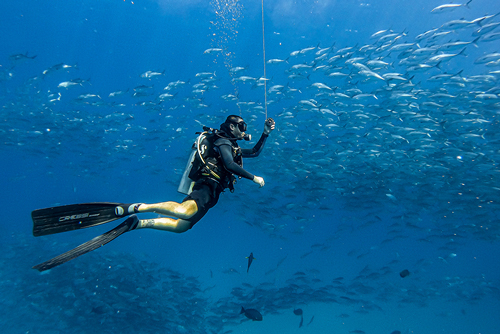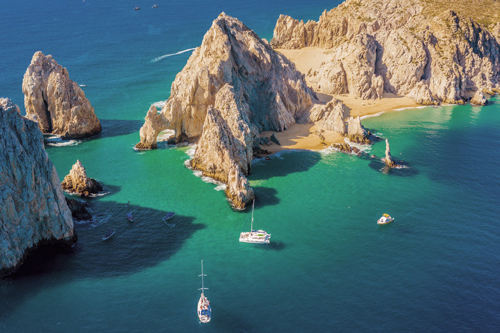Located off the East coast of Mexico’s Baja California Peninsula, Cabo Pulmo National Park is the perfect choice for certified scuba divers looking for the thrill of shark diving. Here, we can dive with magnificent bull sharks and several other shark species face to face.
Table of Contents :

Meet the Bull Shark (Carcharhinus Leucas)
Behavior
Swimming with the elegant bull sharks is an experience not to be missed. These fast and agile predators are known for being quite aggressive and belligerent, but they do not seem to be bothered about scuba divers.
Distribution and habitat
Carcharhinus leucas are widely distributed in all tropical shorelines worldwide and like to swim in warm, shallow waters. They can even venture upstream in fresh waters, in bays and channels, traveling up to 4,000 km.
Description and Anatomy
They are medium-sized and have a short snout, long pectoral fins and a thick, strong body. They are grey on the top and white at the bottom, with dark tips on each fin. They can measure up to 10 feet in length and weigh as much as 300 pounds.
Diet and feeding
Almost everything in the sea is part of a bull shark’s diet, they are really not picky eaters: from fish, dolphins, to other shark species, they will eat whatever comes in their way. And this is why, even though we are not exactly their favorite serving on the menu, several accidents involving bull sharks attacking humans have been reported.
Did you know? Many other species of sharks can be encountered in the rich Mexican waters of Baja California, like the giant whale sharks or the elegant hammerhead sharks.
Where to Dive with Bull Sharks ? Cabo Pulmo National Park in a Nutshell
It is widely known that Mexico offers some of the best diving in the planet. Cabo Pulmo National Park is definitely part of the package, with its incredible biodiversity and an unparalleled marine ecosystem. This area, inscribed on the UNESCO World Heritage List since 2005, is an example of high marine productivity and species endemism, donating to its visitors beautiful views, exciting encounters and first-hand experience of amazing corals formations. Once an overfished environment, the conservation of this protected area allows it to flourish and rise to the pole-position of the dive sites in Mexico. Sadly, the area has also been included since 2019 in the list of the World Heritage in Danger, since an endemic species of porpoise, the vaquita, one of the smallest living cetaceans, is at high risk of extinction.
Divers and snorkelers can experience the complexity of its reefs and the striking beauty of its waters, where encounters with huge schools of jacks, groupers, turtles and mobula rays are extremely popular. The elaborate reefs of Cabo Pulmo offer shelter and food to several different marine species, but the most sought-after creature in these waters is, surely, the bull shark, master of the Gulf in all its majesty.
The best dive sites in Cabo Pulmo to encounter sharks
One of the easiest spots where you can meet bull sharks is certainly the Vencedor shipwreck, a tuna trawler that has been laying at a depth of 15 meters since 1982. Bull sharks enjoy this area and use it as a cleaning station, which allows divers to catch a glimpse of these sharks in one of their most peaceful moods. In a single dive, you might see six to eight bull sharks quietly swimming through the vestiges of this ship, but other dive sites such as El Bajo, el Cantil or Esperanza will offer great chances of seeing these sharks up close, too.
Dive with bull shark in Cabo Pulmo

Are Bull Sharks Dangerous to Divers ? Is Diving with Bull Sharks Safe ?
Because of their reputation as dangerous and aggressive animals, bull sharks always give some shivers to divers and snorkelers that are lucky enough to get a closer look at them. However, while not as peaceful as whale sharks, that can be seen in La Paz or gregarious as hammerhead sharks that can spot in the Gordo Banks, the bull sharks of Cabo Pulmo are an exciting encounter that will live in your memories forever.
Rules to scuba diving with bull sharks
It is imperative, when diving with bull sharks, to avoid any type of wrong interaction – including shark feeding, of course – and being escorted by a knowledgeable and experienced dive guide is of paramount importance.
When is the Best Bull Shark Season in Cabo Pulmo?
Even though conditions are dive-friendly all year round, the best water conditions to dive in Cabo Pulmo have always been late August to December due to the warmer sea temperature and clearer waters. In general, during winter months, cold water means lower visibility but also abundance of marine species; on the other hand, in the warmer months, visibility is spectacular: in October and November, it can pass the 100 feet mark!
Whichever season you chose to visit Cabo Pulmo, you will be impressed by its exciting marine encounters, whether it is its abundant marine life to striking schools of jack fish or swimming with Mobula ray: you will be delighted!
The Impact of Shark Conservation on Cabo Pulmo National Park
It is undeniable that it is thanks to strict measures and shark conservation projects that Cabo Pulmo is today one of the most famous shark diving locations worldwide. Scuba divers of all levels can participate to the shark conservation effort by taking a specialty courses such as the PADI Project Aware Shark conservation course, organized by Cabo Private Guide on a regular basis. This is the ideal way and location to learn more about sharks and stop demonizing these intelligent and stunning creatures. Take a look at our Online course page to start learning about sharks’ environment, risks and current situation, as well as potential actions that might help preserve them in the future. You can also complete the theory with two dives to observe the bull sharks in the thrilling waters of the Cabo Pulmo National Park.


